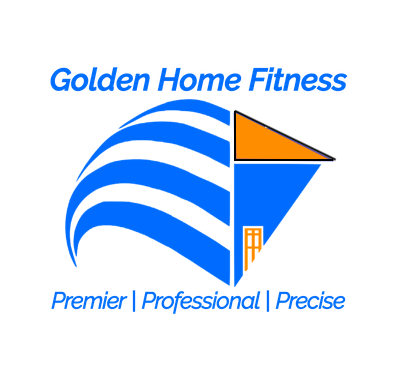Home Fitness Equipment: How to Choose Cardio Machines
If you are in the market for an in-home athletic exercise machine, specifically cardio home fitness equipment, then you probably know that the decision making process can be daunting.There are different machines, different manufacturers, different models, and a wide range of prices. All seem to promise you "fat burning," "weight loss," "obesity cures" or some other tasty physical transformation.So how do you decide? Let's take a look.
Types of Machines
First, let's look at the basics: the various types of machines out there. There are treadmills, stationary bikes, and ellipticals. There are rowers, also known as ergometers. Some what newer to the market are cross-trainers like the tread climber, a combination treadmill and stair climber.Even among the machines mentioned above, you will find a wide array of choices. While some offer just basic movement, others may provide preset courses.Some treadmills elevate, while others do not. Some stationary bikes are upright (like a typical bicycle) while others are recumbent, allowing you to sit somewhat reclined.And the array of ellipticals is a tad overwhelming! Some offer moveable arms, thus creating more of a full-body stride. Others simply have bars that you can choose whether or not to hold for balance.As far as brands are concerned, I'll abstain from mentioning different manufacturers. I do not want to seem like I favor a particular brand.
An Important Tip for Home Fitness Equipment
I will caution you though: when researching equipment, make sure you write down both the manufacturer and model number. Models are constantly being improved upon and updated. Manufacturers tend to run from low-end to high- end commercial grade.And, often, higher price is not necessary for your needs and does not guarantee better performance.Yes, you get what you pay for. But there are many shades of gray in the exercise machine market. And many very decent machines fall in the gray area!
Beware of the "Extras"
When purchasing home exercise equipment, it is important to consider what I shall refer to as "the bells and whistles." These are the extra offerings of the machine.Sometimes they are important. Yet, often they are unnecessary and really just drive up the price.
Necessities
So what do I consider necessary? Please note that this is just one trainer's opinion.
Weight Control Panel
First, I highly recommend a control panel that allows you to input weight. By default, most machines set the exercisers' weight at 150 lbs. This affects the machine's resistance as well as the output read (e.g. calories burned).Let's suppose that you weigh 120 lbs. Yet the machine has, by default, set you at 150. The resistance is going to be more challenging. A 150 lb person can surely depress pedals more easily than a person 30 lbs lighter.Further, the calories the machine calculates that you have burned are based on the higher weight. Most home fitness equipment machines use a very simple mathematical calculation to determine calories burned.That calculation involves a percentage of overall body weight. So, no matter how hard or easy you work, the calorie count will be higher for the heavier person.Make sense?And the experience itself will be unnecessarily challenging because it is assumed that, at the higher weight, the resistance can be harder.
Entire Body Workout
Second, I want a machine that works my entire body. The more muscle groups you incorporate, the better the workout.Therefore, a stationary bike must have movable arms. If an elliptical does not, I am sure to pump my arms as I move my legs. Of course, if you have a chronic injury that prevents you from working a particular body part, then this would not apply to you.
Customer Reviews
Third, I want to be able to read customer reviews on the machine. If no-one has yet to rate the product, then ask people you trust. If nobody is familiar with the product, then you might want to think twice before purchasing.
Warranty
Fourth, I must have a warranty. Exercise equipment breaks. Period. And the cost to fix it can be greater than the original cost at purchase. Ask the seller about warranties.Make sure everything is in writing. And pay extra for a longer coverage period if it is offered. It is worth it!
Stay Engaged
Fifth, as with all exercise, I want a machine THAT DOES NOT BORE ME! If you are challenged by a machine, that's fine. If, however, you can sense that you are going to find the machine tedious very quickly, stay away!We all know that tedious exercise is exercise that we slowly avoid. Perhaps a machine that allows you to read or watch television is appropriate for you. Conversely, perhaps a machine that soothes you - not too difficult, yet raises your heart rate - is the one that allows you to think and focus.
Take Your Time!
Overall, my advice is to give yourself time when purchasing exercise equipment. Spend the time researching and talking to others, whose opinion you trust.Visit distributors and TRY the equipment before buying. Wear comfortable clothing with sneakers to simulate how you will feel during a workout. If you don't exercise in heels or a suit, then don't shop for equipment in heels or a suit!
Consider Your Individual Needs
Above all, consider your needs. What do you hope to achieve? Are you selling to build muscular strength or endurance? Are you looking to improve your cardiovascular fitness? What are your goals, and which machine is best able to help you meet these goals? Once you have taken the time to answer these questions, set your price limit.Know the spatial requirements. Narrow down your list. Then take the plunge! Owning the equipment can be a terrific first step in taking ownership over your fit lifestyle. And it will augment any training program you or your Personal Trainer sets up for you. Congratulate yourself and enjoy!Written by Suzanne Horgan, a Golden Home Fitness Certified Personal Trainer.
